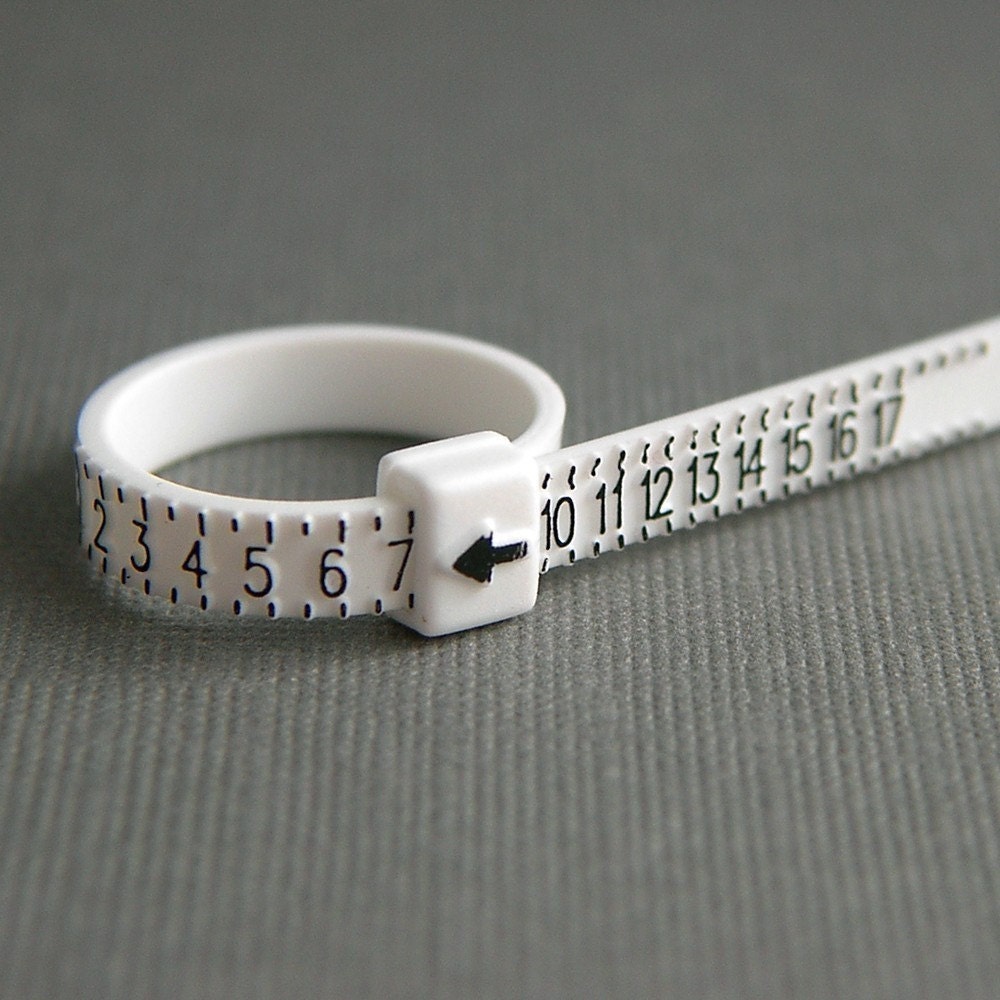
Having the customer relax and letting the salesperson do the work ( no yanking or tugging) will give you better results and more accurate sizings (jewelers will actually save money doing this, because they won’t have the cost of re-sizing a ring, and the customer won’t get mad either at having to come back repeatedly). The sizer should fit snugly over the knuckle, but perfect on the finger.


Then it’s up to the jeweler (salesperson) to put the ring sizers on their finger one at a time until they find the one that fits. The best and most accurate way to size a person’s finger is to have them hold their hand out level and relax their fingers. Customers don’t know how ring sizers are supposed to fit or feel. I’ve seen salespeople just hand over the sizers to the customers to have them figure out what size they need.ĭon’t do it! It won’t be accurate and in many cases it will be off by whole sizes. The worst thing that a jeweler can do is to let the customer figure out their own ring size. Fingers can change drastically in a week or two. Sometimes you have to size a ring twice in order to get the fit right. See what I mean? Sometimes it’s not so easy. These rings can’t be sized in a perfectly round circle without ruining the channel… They have to be sized more oval in shape.
#RING SIZER STICK PLUS#
Plus some rings are designed with long flat channels on top of the rings, which makes sizing them a bear. Those rings make it so much more difficult to get the proper size. Ring sizers work perfect unless you’re dealing with rings that have open basket heads, tapered shanks, hollowed out insides or really wide rings (like 15mm wide). Hopefully the jeweler has ring sizers that go from 1-15. So if you have little, bony fingers or fat, pudgy digits, you may not be able to get sized properly. 6.25, 6.5, 6.75, 7…) also which are great and more practical for getting those in between sizes.ĭo note that most sizers only go from sizes 4-12 (on average).
#RING SIZER STICK FULL#
Most ring sizers come in full and half sizes (like 6, 6.5, 7, 7.5…) But they also make sizers in quarter sizes (6. They are usually plastic or metal and have curved edges and domes to mimic a comfort fit band (before comfort fit sizers came out, jewelers had to use the wider ring sizers and add 1/2 size to them in order to get a good fit). Wider metal ring sizers (usually around 4 or 5mm wide, like these wide ring sizers here) work great for wider rings, wedding bands and rings of some bulk or thickness (also used for class rings and men’s rings).Īnd then you have the comfort fit sizing rings ( like these ring sizers here).

They are usually around 2mm wide and they work great for determining thinner rings (like engagement solitaire rings). Thin metal ring sizers ( like these metal sizers here). Ring sizers come in different shapes and sizes. Metal ring sizers work better, because, well, you’re buying a metal ring, not a plastic one. Plastic ring sizers feel too odd and too lightweight on the finger.

Ring sizers by themselves will only get you so far.Ī lot of ring sizers are made out of plastic ( like these pairs of plastic sizers here to save money), and they just don’t make the cut. That helps them make a more educated guess.
#RING SIZER STICK SKIN#
Jewelers can look at your fingers, feel them (jewelers get a better idea of how a ring should fit on your finger by actually feeling the skin and bones… Feeling the pudginess of your finger), and see what size you are close to. The jeweler’s opinion weighs heavily on sizings. That’s where the jeweler comes into play. Ring sizers are only meant as an aid to help you determine the right size. Plus, what ring sizers tell you, may not mean squat…


 0 kommentar(er)
0 kommentar(er)
